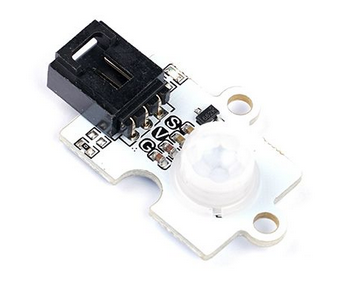Hardware Introduction
micro:bit Introduction

The micro:bit is a miniature computer designed for educational programming purposes for young people, measuring only 4cm x 5cm, but with a range of sensors and LEDs that can be used to control and monitor the physical world.
The micro:bit can be connected to a computer via a USB cable or Bluetooth and programmed using programming software. It supports a variety of programming languages, including Microsoft MakeCode, Python and JavaScript. Students can use these programming languages to write code to control the sensors and LEDs on the micro:bit to create a variety of fun projects.
The micro:bit is designed to be easy to use and suitable for beginners. It can be used for a variety of educational activities such as programming courses, science experiments, and maker activities. By using the micro:bit, students can develop creativity, problem-solving skills and teamwork.
For more information about micro:bit, please visit: micro:bit official website.
IOT:bit

The IOT:bit expansion board is an expansion board with bountiful functions designed for micro:bit. You may find more details below:
WiFi Module: The IOT:bit has a WiFi module that allows you to easily connect to a wireless network. With the WiFi module, you can enable fast communication with cloud platforms such as Thingspeak and HiveMQ to transfer data to and from the cloud. This opens up a wide range of connectivity and remote control possibilities for your smart home project.
RTC Clock Module: The IOT:bit also integrates an RTC clock module (Real Time Clock), which has a precise timing function. The independently powered RTC module continues to keep time even if the micro:bit is powered down. This provides continuous accurate time recording for your applications such as time stamps, timed tasks and event triggering.
Buzzer: The IOT:bit also includes a buzzer through which you can play melodies, sound effects or alarm sounds. The buzzer is capable of producing sounds at different frequencies, adding audible feedback and interactivity to your projects.
IO Port Extension: The IOT:bit expands all the available IO ports on the micro:bit and leads them in GVS form, making it easy for you to connect with various 3V electronic building blocks modules. You can expand various modules, such as LED lights, photosensitive sensors, servos, etc., to build a richer and more diverse smart home system.
The IOT:bit expansion board has many functions to meet your needs in smart home development. It provides WiFi connection, RTC clock, buzzer and IO port expansion, etc., bringing more possibilities to your project. Not only can you achieve fast data transmission and remote control, but you can also add sound effects and access to various sensors to make your smart home system more intelligent and interactive.
For more information about IOT:bit, please visit: IOT:bit IoT Expansion Board.
Octopus PIR Sensor

The PIR sensor is an electronic building block that uses the AM412 pyroelectric digital smart sensor. This module is designed to sense and detect the movement of a human body or animal. When a human or animal approaches the sensor, it is able to detect and signal a change in body temperature. The sensor has a sensing distance of about 4-5 metres, meaning that it is able to detect movement within this range and send the appropriate signal to the system. This sensor module is commonly used in security systems, automated lighting systems or other applications that need to sense and respond to motion.
When human or animal motion is detected, a value of 1 is returned and the on-board LED illuminates, otherwise a value of 0 is returned and the on-board LED goes out.
For more information, welcome to visit the wiki: Octopus PIR sensor.
Note: The PIR Sensor detects motion signals, not heat signals. After a period of time when there is no movement when a human or animal approaches the module, the on-board LED turns off and returns the value 0.
Octopus Sonar:bit

Sonar:bit is a sensor module based on ultrasonic sensing technology designed for use with the micro:bit educational development boards.
It can be used to measure distance and detect obstacles, providing users with a simple and reliable way to achieve distance measurement and obstacle avoidance. Sonar:bit uses an ultrasonic sensor that emits ultrasonic signals to the surrounding area and receives the echo to calculate the distance between the object and the sensor. It is highly accurate and stable and can measure from 2cm to 400cm.
By programming the micro:bit, users can implement various applications based on the Sonar:bit's measurement results, such as obstacle avoidance function for smart carts, distance measurement, and so on. In short, users can create a variety of interesting applications. Sonar:bit is an indispensable tool for both educational and creative projects.
For more information, welcome to visit: Octopus Sonar:bit wiki.
180° Servo

Often referred to as a servo, a servo motor is a small device with an output shaft. When we send a control signal to the servo, the output shaft can be turned to a specific position. As long as the control signal remains constant, the servo keeps the angular position of the shaft unchanged. If the control signal changes, the position of the output shaft changes accordingly. In daily life, servos are often used in remote-controlled aircraft, remote-controlled cars, robots and other fields.